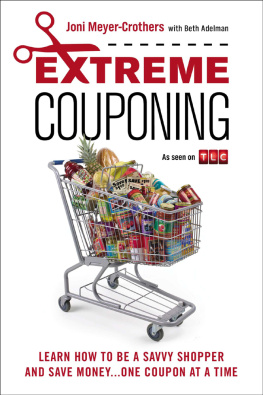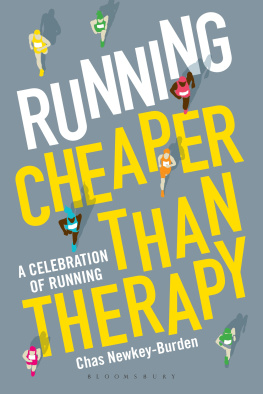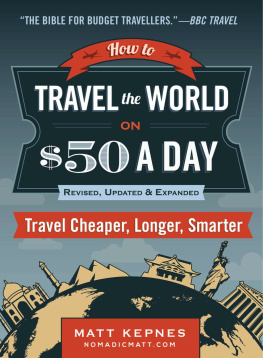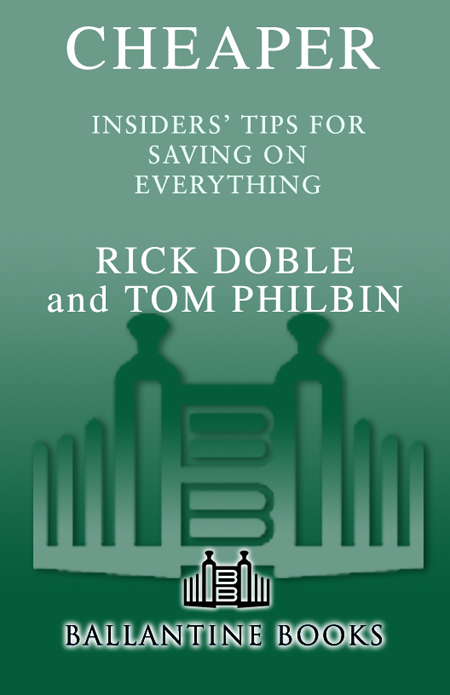INTRODUCTION
 ERE'S THE SITUATION THAT JUST ABOUT EVERYONE HAS BEEN dealing with, including the authors of this book. You know that you work hard, but you seem to be spinning your wheels or getting stuck in the mud. You work long hours, yet your family's income has stayed flat while prices have been skyrocketing. This financial squeeze has put millions of Americans in a stranglehold.
ERE'S THE SITUATION THAT JUST ABOUT EVERYONE HAS BEEN dealing with, including the authors of this book. You know that you work hard, but you seem to be spinning your wheels or getting stuck in the mud. You work long hours, yet your family's income has stayed flat while prices have been skyrocketing. This financial squeeze has put millions of Americans in a stranglehold.
So what do you do? You could take another job, but then Americans already work one hundred hours longer per year than just about any other workers in the industrialized world. In addition, during the last seven years your real income (adjusted for inflation) dropped $1,175 at a time when average families are spending $4,655 more for everything from gas to food to housing to health insurance.
But waitthe news gets worse. While the price of gas has been mostly bad news, add to that the price of heating oil and propane gas. The federal Energy Information Administration projected a 34 percent increase for 2009.
If you feel you are working harder, getting paid less, and still having to shell out more money, join the club. Just about everyone in the middle is feeling the pain.
So is there anything that you can do about this? The answer is a resounding yesand in this book we'll show you how.
Sometimes money matters can be as exciting to read as a tract on solid-waste management. But the bottom line, as it were, is that the facts can mean the difference in whether someone walks to work or drives a car, has a warm coat for a winter's day, or is able to give their kids a Christmas toy. Sometimes money is the difference between life and death, as when somebody doesn't go to a doctor, or has to make a choice between medicine and food, or medicine and electricity.
The authors have always thought that the highest-quality information comes from people who have a kind of dirty-fingernail grasp of it: the insiders, the people who work in a particular field and know where the bodies are buried. For example, the writer in the funeral trade magazine who tells you why it's stupid to pay hundreds of dollars for a concrete liner box, the executive at Johns Hopkins Hospital who can tell you whom to negotiate with to glean a possible 30 percent savings on a hospital bill, the professional engineer who counsels that 98 percent of all wet-basement problems stem from excess water saturating a house foundation, the auto mechanic who tells you that using cruise control can save you 14 percent in gas costs, and the authors themselves: One of them, Tom Philbin, has written three books on saving money and has long had a passion for helping consumers, and the other, Rick Doble, founder of SavvyDiscounts.com, is equally motivated and one of the greatest hagglers there is. The authors know where some bodies are buried as well.
Most of this book contains tips from such insiders, but we have included some other fairly well-known money-saving ideas as well, such as ways to save when buying gardening supplies. The only criterion a tip must meet for inclusion in this book is that it will save readers money.
The book is divided into two parts. First are overall shopping tips, general approaches that will help you achieve discountssuch as shopping around, haggling (which 67 percent of shoppers, possibly more, now do), and buying store brandsand that will make you aware of strategies, such as upselling and suggestive selling, that sales personnel use to separate you from more of your money. The second part is an A-to-Z lineup of a wide variety of specific products and services, with suggestions on how to trimand in many cases slashthe cost of staple items such as drugs, food, clothing, gasoline, and oil. But we also include offbeat items such as pianos and chimney cleaning. Both sections of the book are also informed by the authors' keen awareness that people and businesses will try to rip you off. Indeed, just in the home improvement category, homeowners will learn how they can save literally tens of thousands of dollars. At the end of each section is a summary of money-saving strategies that should help you get a better grasp of things.
We have mapped out nearly twenty categories where it's simple to save money: from electricity to fuel oil, from auto insurance to groceries. The savings can be substantial and can easily add up to $5,000. And $5,000 is just about the right amount of money to help pay for the extra cost of gasoline and other added expenses you have no control over. Plus, if you follow all of our tips, we believe you can save a lot more than $5,000, but just to be conservative (we'd rather offer you less and deliver more), we'll say $5,000.
We are proud of this compendium of useful and easy tips. It took coauthors Tom Philbin and Rick Doble a combined thirty years to discover, research, and test out a variety of money-saving ideas before settling on these very bestsimple and easyways to save money that won't take you any more time and won't change your lifestyle.










 S OF PRESS TIME, THE URLS DISPLAYED IN THIS BOOK LINK OR refer to existing websites on the Internet. Random House, Inc., is not responsible for, and should not be deemed to endorse or recommend, any website other than its own or any content available on the Internet (including without limitation at any website, blog page, information page) that is not created by Random House.
S OF PRESS TIME, THE URLS DISPLAYED IN THIS BOOK LINK OR refer to existing websites on the Internet. Random House, Inc., is not responsible for, and should not be deemed to endorse or recommend, any website other than its own or any content available on the Internet (including without limitation at any website, blog page, information page) that is not created by Random House. ERE'S THE SITUATION THAT JUST ABOUT EVERYONE HAS BEEN dealing with, including the authors of this book. You know that you work hard, but you seem to be spinning your wheels or getting stuck in the mud. You work long hours, yet your family's income has stayed flat while prices have been skyrocketing. This financial squeeze has put millions of Americans in a stranglehold.
ERE'S THE SITUATION THAT JUST ABOUT EVERYONE HAS BEEN dealing with, including the authors of this book. You know that you work hard, but you seem to be spinning your wheels or getting stuck in the mud. You work long hours, yet your family's income has stayed flat while prices have been skyrocketing. This financial squeeze has put millions of Americans in a stranglehold.